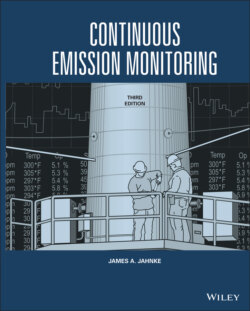Читать книгу Continuous Emission Monitoring - James A. Jahnke - Страница 73
COMPLIANCE ASSURANCE MONITORING AND THE CREDIBLE EVIDENCE RULE
ОглавлениеThe distinctions between compliance indicating and compliance monitoring systems are the result of environmental agency policy development since 1971. In the late 1980s, policy direction began to shift toward the use of CEM systems for compliance monitoring, with many new regulations specifically stating that CEM systems were to be used for direct enforcement. Then, in response to the 1990 CAAA requirement that major stationary sources submit certifications of compliance with pollutant emission limitations, the compliance assurance monitoring (CAM) rule was developed (U.S. EPA 2020j). As discussed earlier, the CAM rule focuses on monitoring the operation and maintenance of air pollution control equipment, with the assumption that this monitoring will indicate the compliance status of the source.
The CAM rule goes back to the concept of monitoring to indicate compliance or noncompliance. CAM data obtained from a continuous monitor or a parameter monitoring technique would not be used directly but would serve in further negotiations similar to those used in the evaluation of excess emission reports. But the question remains whether CAM data are enforceable data. The answer lies in the credible evidence rule, which was promulgated separately from the CAM rule, but is viewed by EPA (U.S. EPA 1997a, b) as complementing the rule.
The credible evidence rule is relatively concise, stating:
For the purpose of submitting compliance certifications or establishing whether or not a person has violated or is in violation of any standard, nothing shall preclude the use of any credible evidence or information relevant to whether a source would have been in compliance with applicable requirements if the appropriate performance or compliance test or procedure had been performed. [emphasis added]
The rule allows CEM data to be used in litigation, whether the data comes from a compliance indicating CEM system, a compliance monitoring system, or a compliance assurance monitoring (CAM) system (Figure 2‐6).
The key to using the data for enforcement is the ability to show that a relationship exists between the monitoring data and the reference (test) method specified for the pollutant in question, for the source in question. A certified CEM system that has passed a relative accuracy test to meet performance specifications or a parameter correlated to performance test data would pass this relationship test. In other cases, arguments and further information might be required in the course of litigation.
Figure 2‐6 illustrates that data from a compliance indicating CEM system or a compliance assurance monitoring system used to monitor the operation and maintenance of air pollution control equipment can be used for enforcement through the credible evidence rule. Data obtained from a compliance monitoring CEM system need not invoke the credible evidence rule in enforcement cases. The credible evidence rule is a clarification of the position that many agencies have always maintained; in litigation, §13(a) of the Clean Air Act allows the use of any information available to the agency.
Figure 2‐6 CEM systems and enforcement policy.
